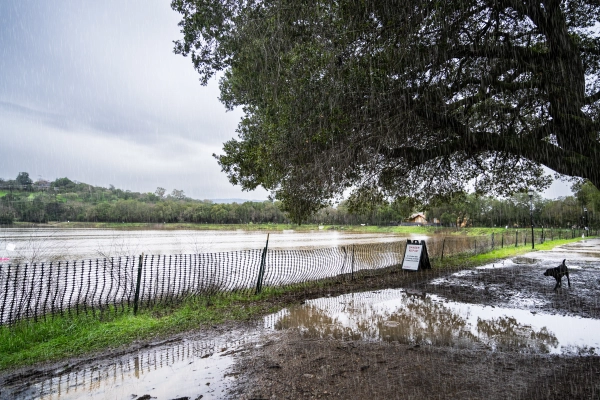After weeks of test results indicating unsafe bacteria concentrations in the water, Lake Lagunita’s bacteria levels are now within California’s guidelines for safe swimming, according to Stanford professor of civil and environmental engineering Alexandria Boehm.
Boehm and Max Shen ’25 collected lake water samples from Jan. 31 to Feb. 9, noticing reductions in the amount of harmful bacteria in the water. Boehm believes the Sun and the lack of heavy rain were behind this shift.
“When the Sun hits the water, it can kill bacteria in the water that are harmful, and as the water sits, contaminants can settle out,” Boehm said. “But I still think it’s probably not the best idea to swim in it.”
Previous concerns about water quality led the University to put up signs advising students against entering the lake. These worries seem to have been legitimate: tests from Jan. 31 found abnormally high levels of enterococcus, a bacterium that indicates the presence of fecal matter.
“It’s probably animal feces that’s been deposited in the watershed and perhaps some human waste that may have leaked out of sewer lines,” Boehm said.
While enterococcus itself isn’t particularly harmful, fecal matter can lead to a host of issues. According to the EPA, fecal material usually contains “disease-causing bacteria, viruses and protozoa” that can “sicken swimmers.”
“If you swim in waters that test positive for high enterococci, it’s associated with UTIs, bacterial infections, and I think you can get gastrointestinal distress,” Shen said.
The heavy rains the campus endured in January likely influenced the poor water quality of the lake in previous weeks. Heavy rain causes an increase in runoff, which can carry fecal matter and contaminate the water.
“Right after a storm event, that’s when we would have the worst water quality,” Boehm said. “You’d want to avoid contact with the water the most right after storm events.”
Shen, who has gone swimming in the lake before, tested the lake to convince a friend to enter the water. The results he obtained in January were not ideal.
“I did not go for a second swim, and she declined to enter the water,” Shen said.
Steven Liu ’26, who previously spoke to The Daily about his reluctance to enter the lake, reconsidered his stance after hearing about the recent test results. Liu is a news writer for The Daily.
“Before I said ‘absolutely not,’” Liu said. “Now, maybe yes, because it’s safer.”
In another world, Boehm says the University could clean and monitor the lake for regular recreational use.
“If Lake Lag were to become a designated swimming location, we could do this testing on a weekly basis and provide information of whether the water was safe or not,” Boehm said. “But I think that the University is probably worried about things other than water quality too.”
According to previous Daily reporting, Lake Lagunita is dry in order to protect the steelhead trout population that live in the San Francisquito Creek. Diverting water from the creek to fill Lake Lagunita for recreational use would put stress on the trout, according to University spokesperson Luisa Rapport. The University also believes debris, deep mud and parasites may lurk in the water. Though the water may be safe from a bacterial standpoint, the other dangers still stand.
“The signs up next to the lake that say ‘don’t swim’ are valid,” Boehm said. “They take into account not just water quality but physical hazards.”
Still, Liu remains optimistic about clearing up Lake Lagunita.
“It will be great for the mental health and the overall well-being of the student body,” Liu said. “Just personally, I love water, and I think Stanford can do it, and they should do it.”
